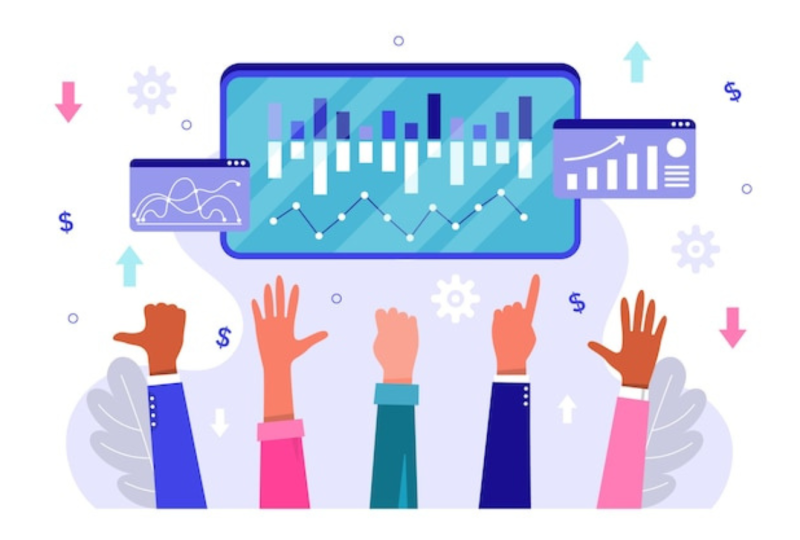Top Tools Every Forex Trader Needs: Margin Calculators Included
Oct 6, 2025

Foreign-exchange trading moves at the speed of a headline. One minute you are comfortably in profit, the next a surprise central-bank tweet wipes out a week’s gains. In 2025, edge comes less from predicting price and more from using the right toolkit to manage risk, interpret data, and automate grunt work. Below is a concise guide to the core tools every modern forex trader, from demo-account newcomers to portfolio managers, should keep within arm’s reach.
The Non-Negotiables: Why Tools Matter More in 2025
The $8+ trillion-a-day FX market (Bank for International Settlements, 2025 update) has become radically more competitive. Spreads are razor-thin, algorithmic execution dominates interbank desks, and retail brokers now offer leverage up to 1:500 in certain jurisdictions, making tools like a Forex margin calculator essential for traders to manage risk effectively. That leaves individual traders with two choices: embrace tech that levels the playing field or accept sub-par results. Good tools do three things:
- Shrink decision time without cutting due diligence.
- Quantify risk in real currency terms.
- Create a feedback loop so each trade teaches the next.
Ignore any of those, and you are effectively donating pips to the market.
Margin Calculators: Your First Line of Defense
If you use only one external tool, make it a margin calculator. Even seasoned traders underestimate how quickly available margin can evaporate when volatility spikes. A dedicated calculator lets you plug in:
- Account currency
- Trade size (lots, mini, or micro)
- Leverage ratio
- Instrument pair and current price
Within seconds, you see the exact margin required and your free-margin buffer after entry. Most broker-supplied calculators will also flash warning levels, e.g., 80% margin utilization, so you can resize the order before the platform auto-liquidates.
Why not rely on the platform’s built-in reading? Because a pre-trade calculator allows experimentation. You can test three lot sizes, two leverage settings, and multiple pairs before clicking Buy. That prevents the classic “Oh, I didn’t think gold would eat that much margin” rookie error and keeps experienced traders from over-allocating during high-confidence streaks.
Cloud-Based Versus Spreadsheet
Stand-alone web calculators update automatically when brokers adjust margin requirements, making them safer than home-grown Excel sheets unless you maintain the sheet rigorously. If you prefer offline, embed formulas that factor dynamic contract size (100,000 units for a standard lot, 10,000 for a mini) and real-time quotes pulled via API. Either way, treat the calculator as a pre-flight checklist: no ticket, no take-off.
Position Size and Risk Calculators: Stopping Over-Leverage Before It Starts
Margin tells you if you can open a trade; position sizing tells you if you should. A risk calculator converts abstract percentage risk (say, 1% of account balance) into a concrete lot size given your stop-loss distance. For example, risking $200 on a 40-pip stop in EURUSD equals 0.5 standard lots at today’s 0.0001 pip value. Most calculators output the lot size plus the dollar amount you’ll lose if the stop hits, which is crucial for keeping drawdowns inside your pain threshold.
Pro tip: Combine risk and margin calculators. First, choose an acceptable dollar risk, then confirm the margin requirement fits the remaining equity. This two-step process prevents the subtle trap of meeting margin rules while still risking an outsized percentage of capital.
Economic Calendars with Volatility Filters
News remains the most predictable source of unpredictability. A proper calendar does more than list event times; it tags each release with a projected volatility score, consensus forecast, and previous reading. Popular calendars now integrate:
- Real-time countdown timers.
- Automatic local-time conversion.
- Push alerts that sync to MT5 or TradingView.
This allows you to flatten exposure before a red-flag non-farm payroll print rather than after the 50-pip slingshot. Some platforms overlay upcoming events directly on your chart, providing a visual reminder not to chase a setup minutes before a rate decision.
Advanced Charting Platforms: MT5, cTrader, TradingView
Although MetaTrader 4 continues to have its loyalists, in late 2024, MetaTrader 5 (MT5) surpassed MetaTrader 4 in global trading volume and now controls approximately 54% of the combined market share in 2025. The multi-asset functionality, 21 time-frames, and blazing-fast strategy tester of MT5 make it an obvious upgrade to serious retail traders.
Yet platform choice is less about brand loyalty and more about workflow:
- MT5. Best for coding automated strategies in MQL5 and connecting to prop-firm evaluators.
- cTrader. Renowned depth-of-market (DOM) and intuitive order windows.
- TradingView. Browser-based, social, and unmatched for custom indicators via Pine Script.
Most brokers now offer at least two of the three, so test-drive and keep the one whose ergonomics match your brain. Remember, platform familiarity lowers execution errors more than any indicator ever will.
Trade Journals and Analytics Dashboards
You cannot improve what you do not measure. Modern journaling apps import trades automatically from your broker, tag them by strategy, time of day, or currency pair, and spit out heat maps of profitability. Look for features such as:
- Screenshot capture at entry and exit.
- Equity-curve projections based on historical win rate.
- Psychological notes section to log mindset.
By month’s end, you will know whether late-European-session breakouts or early-Asian mean reversion pays your bills. That insight beats gut feel every time.
Cloud VPS and Mobile Coordination
A Virtual Private Server keeps expert advisors (EAs) and alerts running even when your local internet drops. Latency under 2 milliseconds to your broker’s data center is now common, and cost has fallen below $15 per month. Pair the VPS with your platform’s mobile app so you can monitor trades from anywhere without risking a platform shutdown when your laptop battery dies at a café. Peace of mind is a tool, too.
Final Word
Technology will never guarantee profits, but it absolutely narrows the gap between retail and institutional performance. Adopt these core tools, practice until they are second nature, and you will spend less time firefighting mistakes and more time compounding good decisions. In a market where spreads keep tightening and speed keeps accelerating, that may be the only sustainable advantage left.




